Although hurricanes are usually associated with southern coastalstates, Hurricane Irene and even more recently, Superstorm Sandyserve as reminders that these are not the only states at risk.
|A state's total risk of exposure depends on a variety offactors, including trends in population and residentialdevelopment, geographic risk factors and length of the coastline.In its 2013 Storm Surge Report, CoreLogic took these elements intoaccount to compile a list of states with the most propertiessusceptible to storm surge damage.
|Click through the following slides to see which states are atthe most risk of storm surge damage.
| 
10.Massachusetts
Total potential properties at risk: 107,657
|Total potential exposure to storm surge damage: $50,284,887,752(Ranks 9th)
|States in the northeast can feel the impact of hurricanes,including those as far north as Massachusetts.
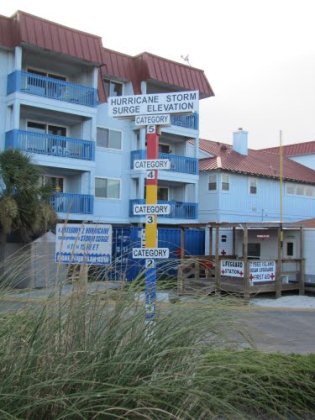 9. Georgia
9. Georgia
Total potential properties at risk: 118,004
|Total potential exposure to storm surge damage: $20,520,284,057(Ranks 12th)
|A storm surge marker elevation marker on TybeeIsland, Ga.|
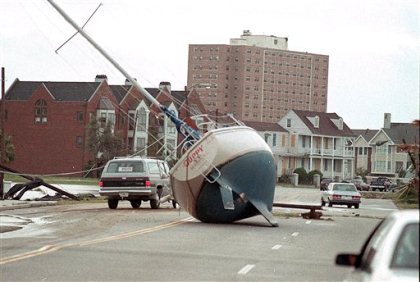
8. SouthCarolina
Total potential properties at risk: 196,784
|Total potential exposure to storm surge damage: $65,582,551,882(Ranks 6th)
|Charleston rounds out the top 10 U.S. metropolitan areas at riskfor storm surge.
|
7. NorthCarolina
Total potential properties at risk: 232,212
|Total potential exposure to storm surge damage: $65,186,373,970(Ranks 7th)
|
6. NewYork
Total potential properties at risk: 270,458
|Total potential exposure to storm surge damage: $134,977,084,630(Ranks 2nd)
|Population density and property value, especially in the NewYork metropolitan area, are responsible for New York's high rankingin both potential property damage and potential exposure forsurges. No homes in New York City are considered in the “low risk”category for surges, and Hurricane Sandy proved how just a category1 could impact the area. Nearly 116,000 homes in the New Yorkmetropolitan area alone were damaged by Hurricane Sandy, which wasonly a category 1 hurricane when it first made landfall in the NewYork metro area.
||
5.Virginia
Total potential properties at risk: 329,234
|Total potential exposure to storm surge damage: $78,044,300,879(Ranks 4th)
|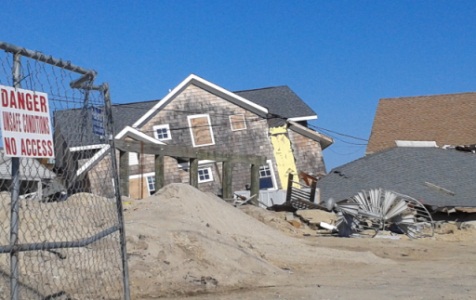
4. NewJersey
Total potential properties at risk: 350,577
|Total potential exposure to storm surge damage: $118,796,101,231(Ranks 3rd)
|New Jersey's low elevation increases the state's risk for stormsurges. In the last 100 years, the sea level along the New Jerseycoast has risen over a foot, contributing to the increased risk insurges, and they are expected to continue rising. Professor ofgeology Daniel P. Schrang of Harvard University, was quoted inthe Harvard Gazette, saying the 13-foot surge in New Jerseycaused by Hurricane Sandy “will be the new norm on the Easternseaboard.”
|
3.Texas
Total potential properties at risk: 369,577
|Total potential exposure to storm surge damage: $50,947,847,377(Ranks 8th)
|Along its coastlines, Texas has long, gently sloping shelves,and the water is relatively shallow. This geographic featureproduces relatively small waves, but increases storm surges. Theshelf permits the surge to accumulate ahead of the storm, thenpushed ashore with the movement of the hurricane. Cities along theGulf of Mexico, particularly Houston and Corpus Christi are largelyaffected by hurricanes and surges.
|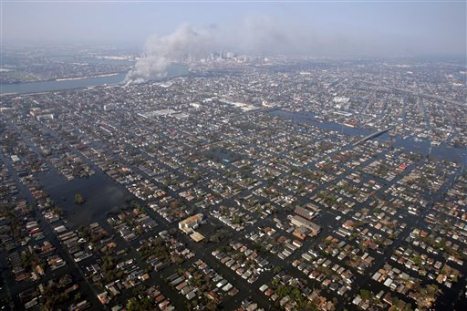
2.Louisiana
Total potential properties at risk: 411,052
|Total potential exposure to storm surge damage: $71,937,718,435(Ranks 5th)
|Though Louisiana does not have an expansive coastline, lowelevation is responsible for putting it at risk. Hurricane Katrinaproved just how damaging storm surges can be in Louisiana,particularly in New Orleans. Although improved levees and pumpingsystems were constructed in the aftermath of Katrina, HurricaneIsaac in 2012 resulted in an 11-foot surge, causing significantflood damage. CoreLogic predicts that just a one foot rise in oceanlevels would succeed in putting another 2,000 homes at risk forstorm surges in New Orleans, worth approximately $300 million.
|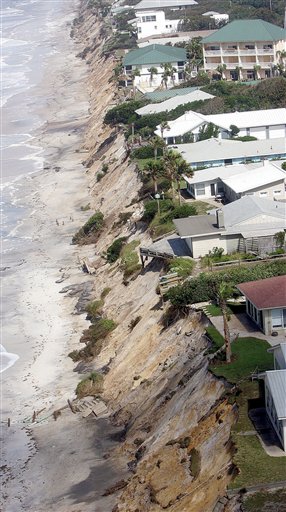
1.Florida
Total potential properties at risk: 1,478,858
|Total potential exposure to storm surge damage: $386,479,005,701(Ranks 1st)
|With 1,197 miles of coastline, it is no surprise that Floridacomes in at No. 1 for the most potential properties at risk, aswell as having the most potential exposure to storm surgedamage. Five of the top ten metro areas in the United Statesat risk for storm surge are located in Florida, including Miami,Tampa, Cape Coral, Naples and Bradenton. In Tampa alone, nearly301,045 properties are at risk, more than Massachusetts and Georgiacombined.
|Erosion is seen along a section of beach near Panama CityBeach, Fla., in 2005 during the busiest hurricane season on recordfor Florida. (AP Photo/Phil Coale, File)Want to continue reading?
Become a Free PropertyCasualty360 Digital Reader
Your access to unlimited PropertyCasualty360 content isn’t changing.
Once you are an ALM digital member, you’ll receive:
- All PropertyCasualty360.com news coverage, best practices, and in-depth analysis.
- Educational webcasts, resources from industry leaders, and informative newsletters.
- Other award-winning websites including BenefitsPRO.com and ThinkAdvisor.com.
Already have an account? Sign In
© 2024 ALM Global, LLC, All Rights Reserved. Request academic re-use from www.copyright.com. All other uses, submit a request to [email protected]. For more information visit Asset & Logo Licensing.








